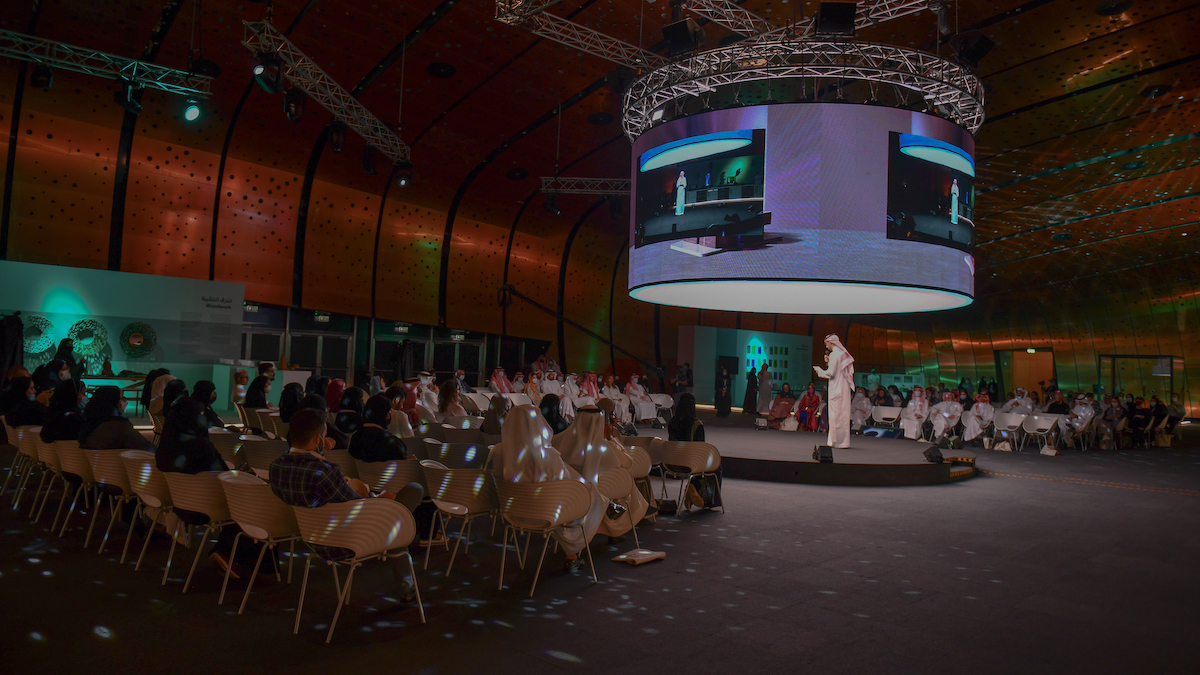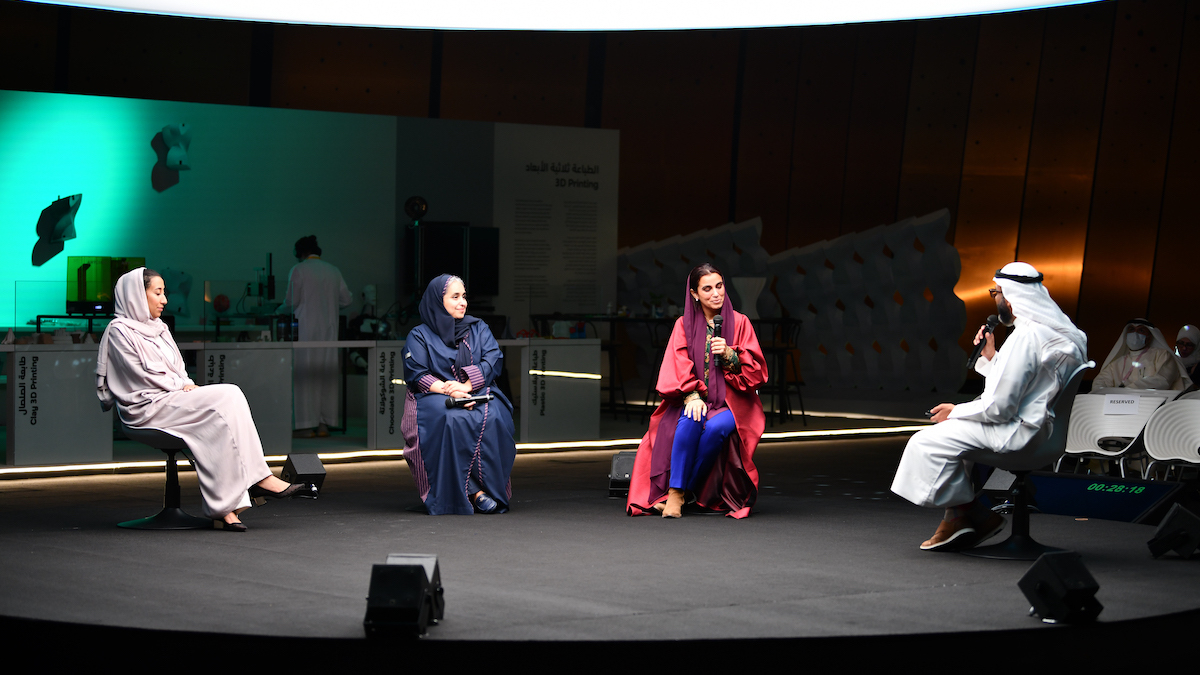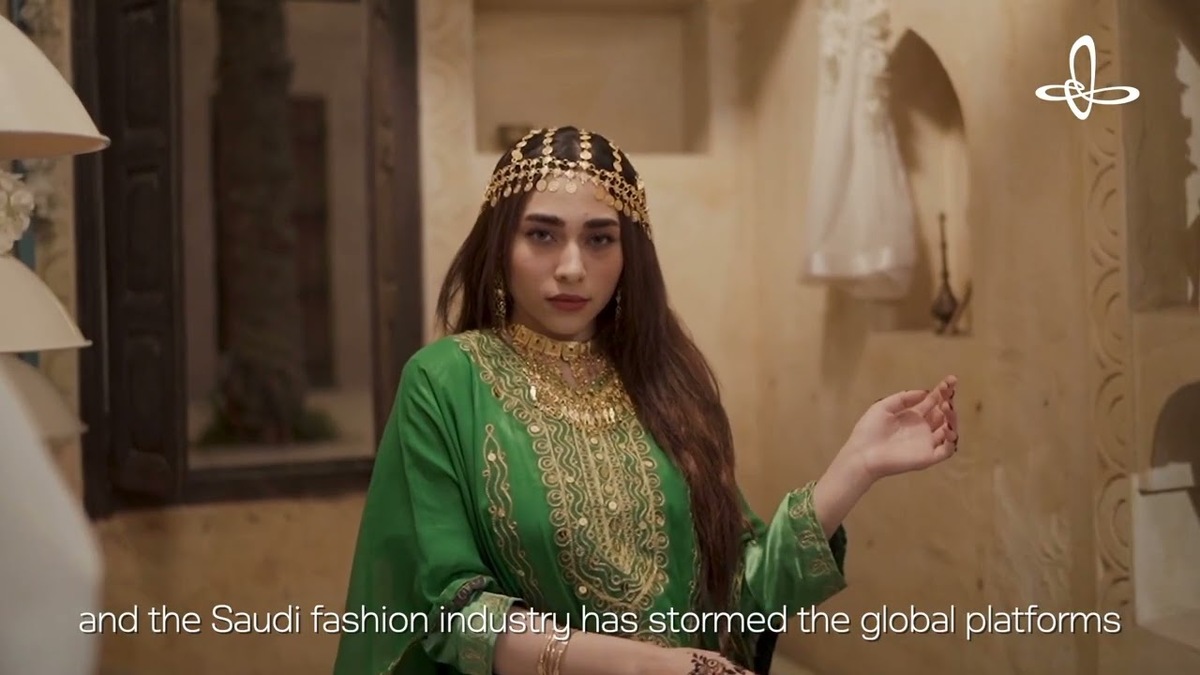Charting cultural landscapes: A look at the cultural creative landscape in Saudi Arabia and MENA
Sponsored by Ithra
A quick glance at the journey that Saudi Arabia’s cultural and creative sector have undertaken over the past five years shows how an industry that, until only recently, was seen as relatively marginal has now become a major component of the kingdom’s economy and of its vision for the future.
Despite the setbacks caused by the Covid-19 pandemic to creative and cultural industries across the globe, and threats that cinema chains, theatres, art galleries and other creative spaces would not recover to pre-Covid levels, the Middle East and North Africa region (MENA) continued to prosper. In Saudi Arabia in particular, where the creative industry has been one of the country’s fastest-growing industries, the sector found innovative ways to keep going, to build its own success story.
Part of this is down to the resilience of the kingdom’s sectors – museums launched a wide variety of virtual experiences, government entities stepped in with a range of support and local programmes, and the creative output of Saudi citizens and residents soared. Another strong point was the momentum the sectors had gathered in the preceding years. The General Entertainment Authority had been established in 2016, and the Ministry of Culture in 2018. The King Abdulaziz Center for World Culture, Ithra, originally founded in 2008 as a CSR initiative by Aramco to promote innovation, community, culture and knowledge, also opened its doors to the public in 2018. The inaugural edition of Saudi Seasons, a diverse calendar of entertainment events and cultural activities that attracted more than 50 million visitors, was launched the following year in 2019. All told, the kingdom’s creative and culture industries, otherwise known as CCI, have been growing at a rate of 13 per cent annually.
As a leading cultural think tank in the region, Ithra wants to promote a greater understanding of how cultural and creative industry performance is evolving in Saudi Arabia and regionally. Having led research with partners, it recently launched three reports that capture the current state of cultural offering and consumption in the MENA region, as well as a Saudi Arabia cultural and creative landscape mapping report. This latter report introduces a CCI index on Saudi Arabia and assesses the CCI landscape across different dimensions and sub-sectors in Saudi. Its aim is to establish the baseline and track the future progress of the kingdom. It has also developed a report on the impact of Covid on cultural industries.
Catalysing culture

Expansion and inclusion
The outlook for Saudi Arabia, and the MENA region more generally, is promising, but there is work that still needs to be done. Cultural offerings need to be made more affordable to the wider public, and hence more inclusive. Of the MENA respondents who said they would visit sites more than twice a year, half were in the highest income range. This trend was more pronounced for Saudi cities, where 75 per cent of high-income respondents expected to visit cultural sites in the future compared with 50 per cent of low-income respondents.
There is also a clear trend towards accessing culture via the digital realm. The highlight of the cultural calendar in Saudi Arabia had long been the Jenadriyah Heritage and Cultural Festival. It still remains a prized event, but more recently – and because of the events of 2020 and 2021 – the nature of access to culture has diversified. More than a third in the kingdom said they had taken virtual museum tours during Covid-19, and other virtual cultural offerings have exploded. Changes in consumer behaviour have prompted stakeholders to experiment with new forms of funding. Domestic tourism and festivals are also restarting and taking stronger strides. International tourism is also expected to provide a huge boost to the cultural sector when it picks up, with several megaprojects, such as the Red Sea Project, and the opening of heritage sites in the next few years, expected to attract millions of additional visitors to the kingdom.
In its vision to cultivate and empower its creatives, the King Abdulaziz Center for World Culture (Ithra), in Dhahran, is an example of the resilience of the Saudi cultural sector, going virtual with its offerings, including creating child-curated content at a time when children remain an underserved segment for cultural content, as well as many other initiatives such as Ithraeyat, a cultural magazine focused on art and artistic culture, launched to keep artists in Saudi and the region connected with the public, especially during lockdowns at the height of the Covid-19 pandemic in the country and region.
Despite the lingering uncertainty surrounding the pandemic worldwide, the research suggests that the creative and cultural industries are on the cusp of a golden age in Saudi Arabia. It is in the lucky position to still be growing, and can learn from its neighbouring cultural cities how to go further.




Business Reporter Team
Most Viewed
23-29 Hendon Lane, London, N3 1RT
23-29 Hendon Lane, London, N3 1RT
020 8349 4363
© 2024, Lyonsdown Limited. Business Reporter® is a registered trademark of Lyonsdown Ltd. VAT registration number: 830519543
Join the Business Reporter community today and get access to all our newsletters, and our full library of talk show episodes
Join the Business Reporter community today and get access to all our newsletters, and our full library of talk show episodes





